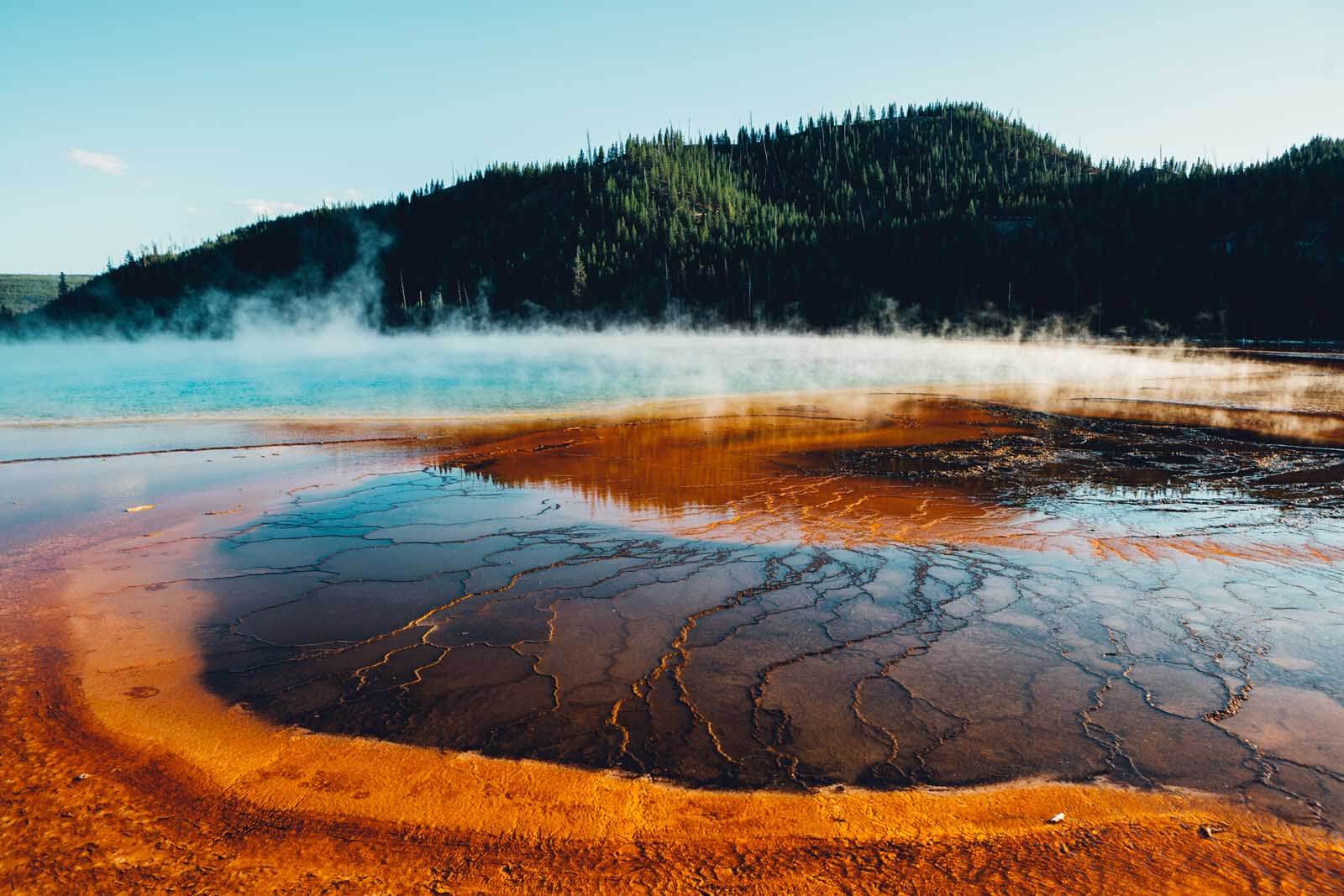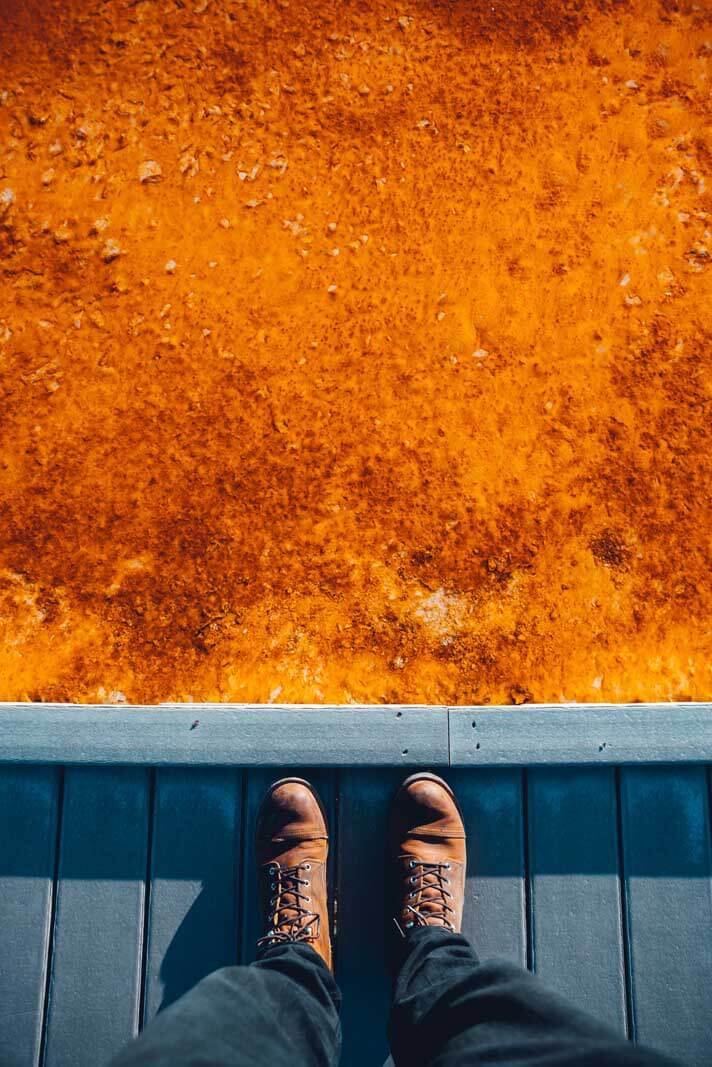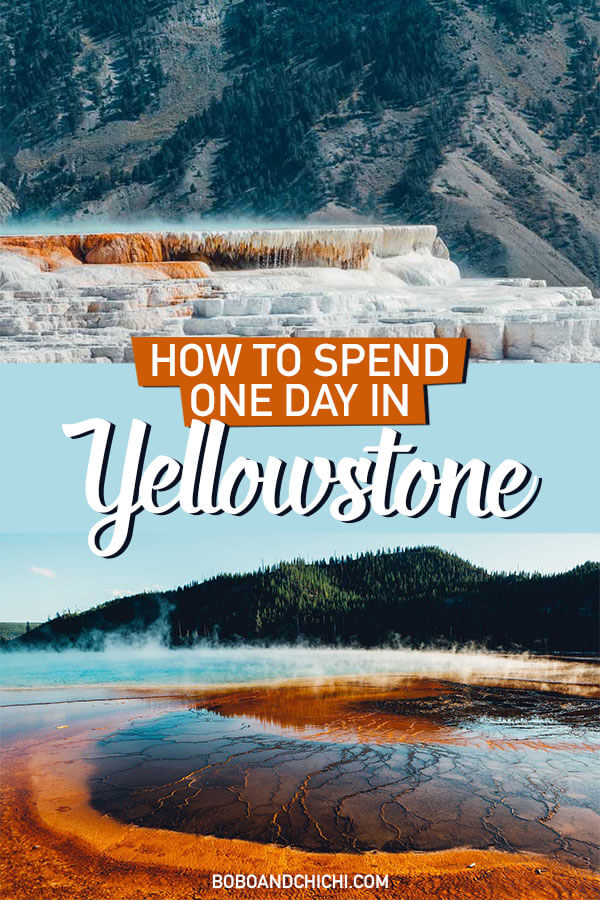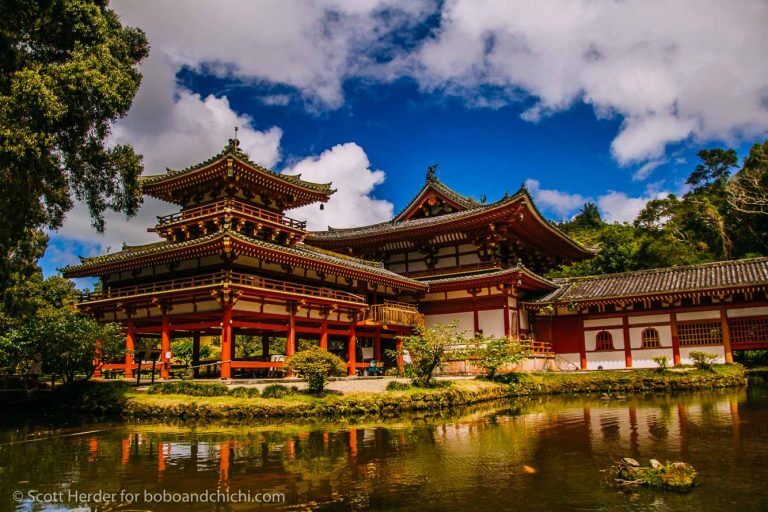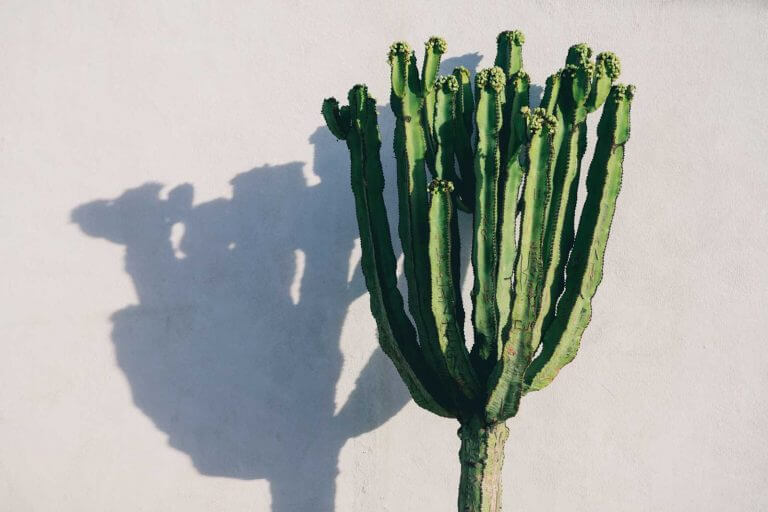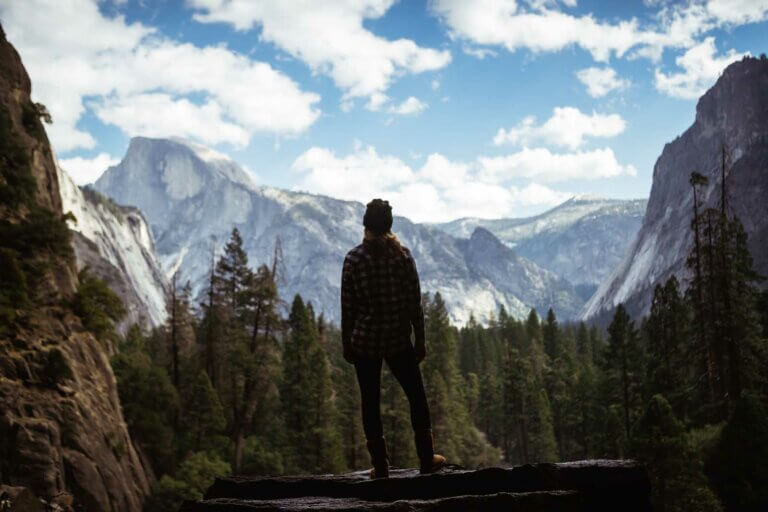The Best of Yellowstone in One Day (Yellowstone Itinerary)
Easily one of the most unique and diverse landscapes in the United States is at Yellowstone National Park. In a perfect world you would have the time and could easily spend a week here on a full Yellowstone itinerary hiking and exploring all the natural wonders here from geysers, thermal pools, wildlife, and mountains. However, we realize that there are tons of other incredible sights and places to visit around this area that you may only have a day before moving on.
We completed our visit in a 6-day Montana road trip (and Wyoming for Yellowstone). If you find yourself road tripping around Montana, be sure to check out our guide and best picks for stops between Yellowstone and Glacier National Park.
We have put together a guide on how to spend one day in Yellowstone National Park, the first National Park in the US and one of the most interesting and beautiful places on the planet.
Enter in Gardiner, Montana
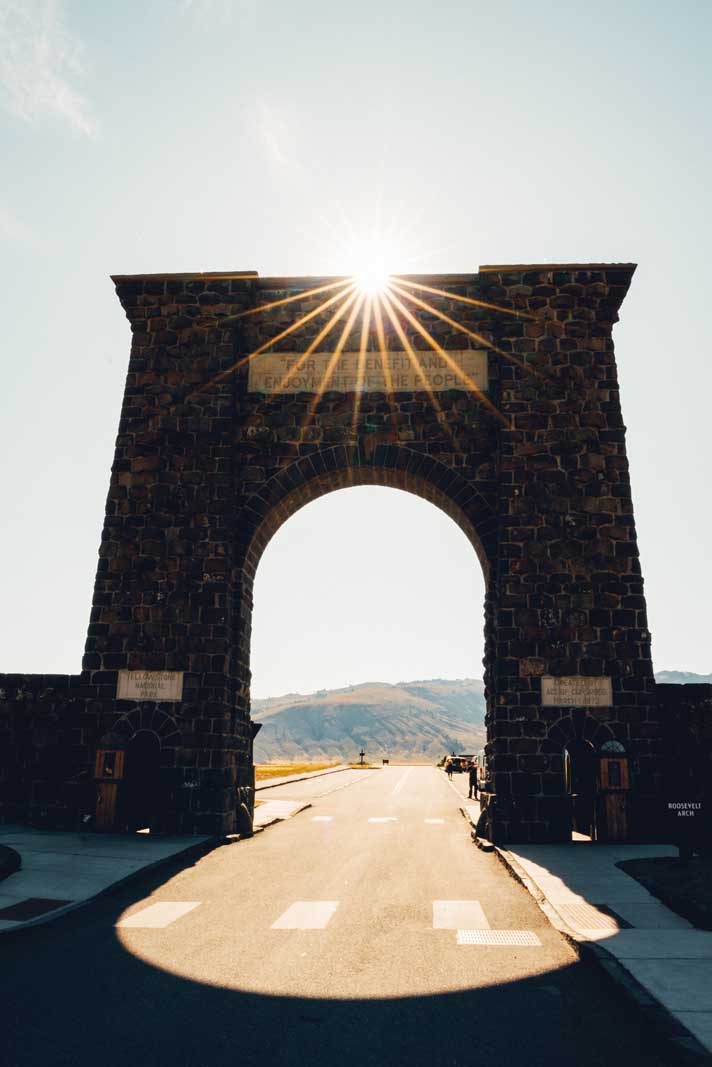
Gardiner is a cool little Western town with all the beautiful scenery of Yellowstone just next door. The city is named after an outlaw fur trapper, the town still maintains a rough around the edges feel and is filled with shops, cafes, and often a meeting point for different tours and outdoor excursions around the area like white water rafting.
Although there are plenty of little shops and things you could do in Gardiner, if you’re only here for one day, we recommend making a quick bathroom stop or coffee stop so you can move on and start your one day in Yellowstone itinerary.
Before entering the park, be sure to drive under the Roosevelt Arch. The arch, named after President Theodore Roosevelt, who established the national park system in the US as we know it while in office after visiting Yellowstone. The arch reads, “For the Benefit and Enjoyment of the People.”
One Day in Yellowstone Sites
Before diving into our Yellowstone itinerary we want to address safety. Yellowstone National Park is incredibly beautiful but parts are dangerous, be sure to follow all warnings and do not go off the pathway. When you’re near any of the thermal areas you need to stay on the walkway even if it looks like there’s a path or trail to walk on and you see other people doing it.
This area has alot of thin crust and people have been seriously injured or even died by going off path and falling through the thin crust of the earth. Temperatures are scalding here!
Don’t touch the water. Seriously, do NOT TOUCH THE WATER. Haha, I don’t want to come off as preaching but people do it or they don’t watch their kids closely and people get seriously burnt and injured from touching the water.
Don’t try to take selfies with wild animals, keep a safe distance between you and any animal you encounter. If you see bison on the road, slowly drive past, don’t stop and get out of the car. People have been gored to death by bison, these are wild animals with a lot of power. You don’t want to catch them off guard or get too close.
Last, watch your hats here. At places like Grand Prismatic Spring and Mammoth Hot Springs, the wind can pick up and carry your hat away. More people get injured from burns or killed by trying to retrieve their hat than from wild animals.
Mammoth Hot Springs
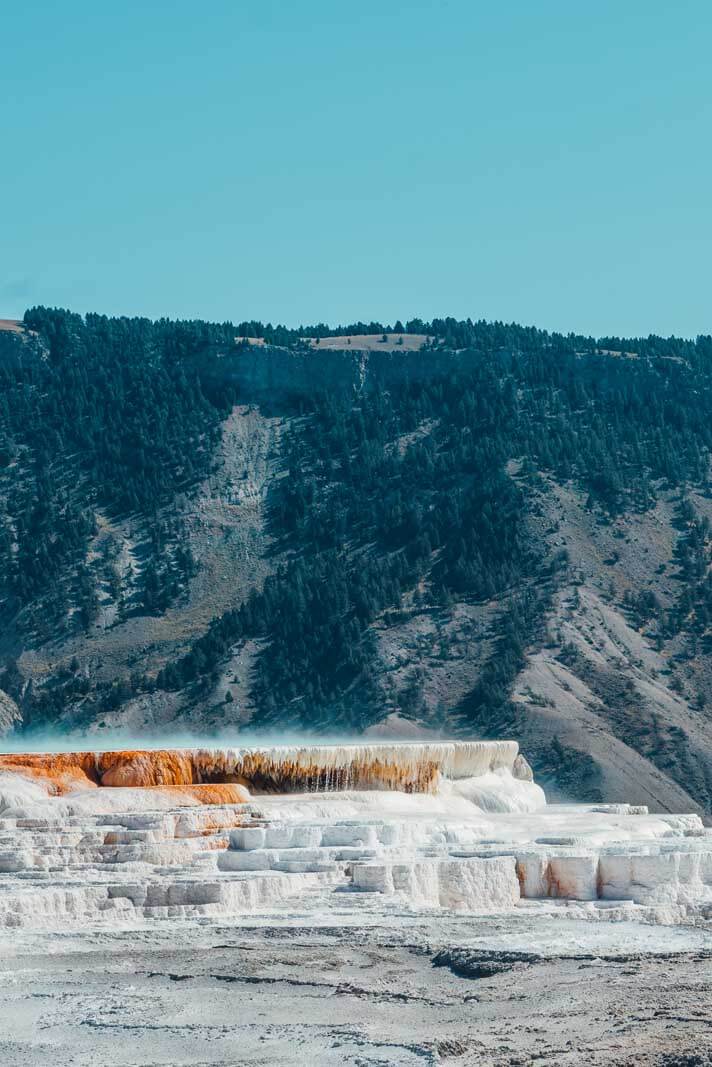
Mammoth Hot Springs is divided into the Upper and Lower terrace boardwalks, with approximately fifty hot springs in the area it covers. On the lower terrace boardwalk, Liberty Cap is one of the most famous natural formations and attractions. The cap is a 37-foot hot spring cone that resembles the peaked caps which were worn by soldiers during the French Revolution.
Mammoth Springs gets its hot water from the Norris Geyser Basin. It flows through an underground fault line beneath the Geyser and feeds the springs and is an incredible place to really explore.
Norris Geyser Basin
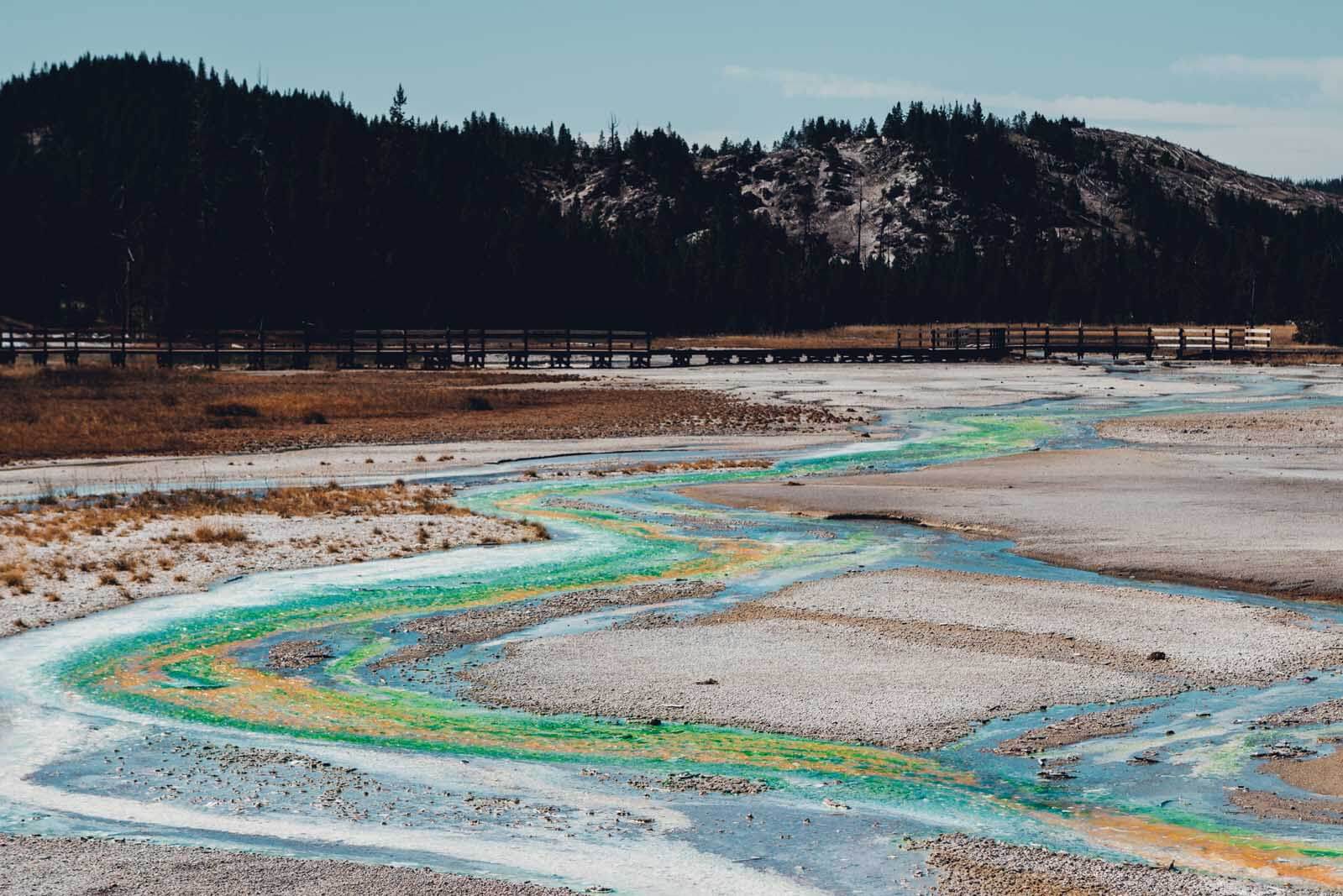
Only a few of the thermal features at Norris exist under boiling point and in a drill hole test once conducted 1,087 feet below the surface and the temperatures reach up to 458 degrees Fahrenheit.
Two areas make up the Norris Geyser Basin, the Porcelain Basin, and the Back Basin. The Porcelain Basin is clear and has no trees, and offers about .75 of a mile of bare ground and boardwalk to walk on and take in the full sensory experience of the sounds, smells, and colors of the basin.
The Back Basin is a little more limited and has a longer trail, as it has a lot of trees and a few features spread across the area along a 1.5 mile loop boardwalk.
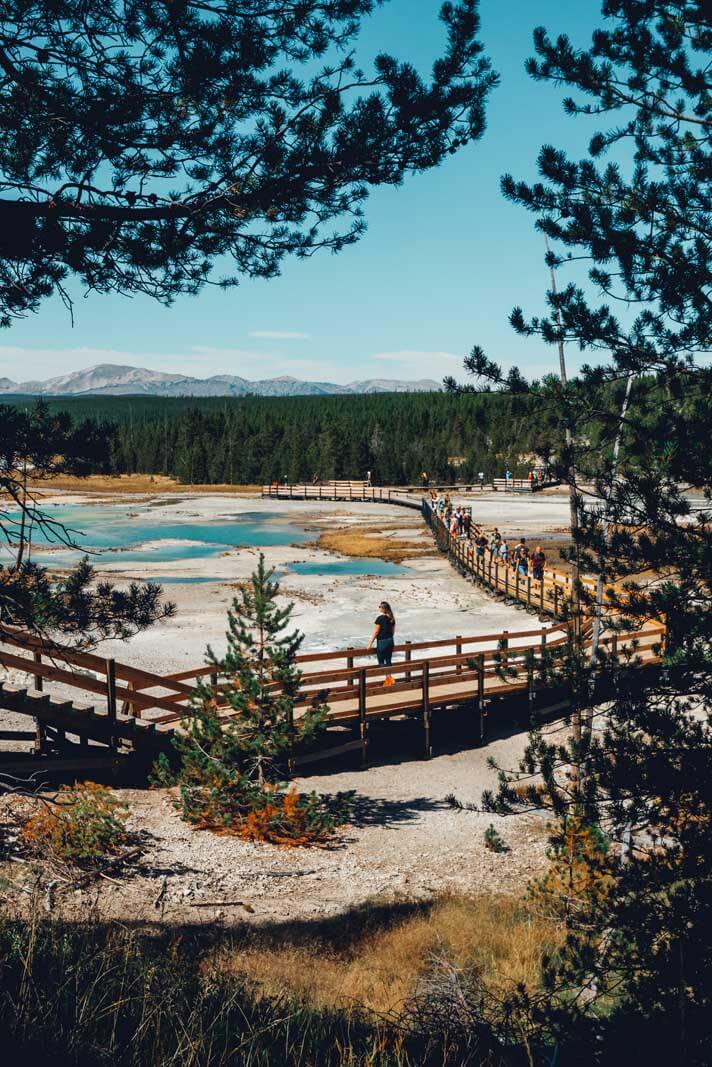
There’s also the Norris Geyser Basin Museum here at the entrance of the trails where you can learn about the science behind the thermal activity on the earth. While you’re going to be on a bit of a time crunch because you only have one day in Yellowstone, we recommend quickly browsing through before moving on to our next location on our Yellowstone itinerary.
Elk Park
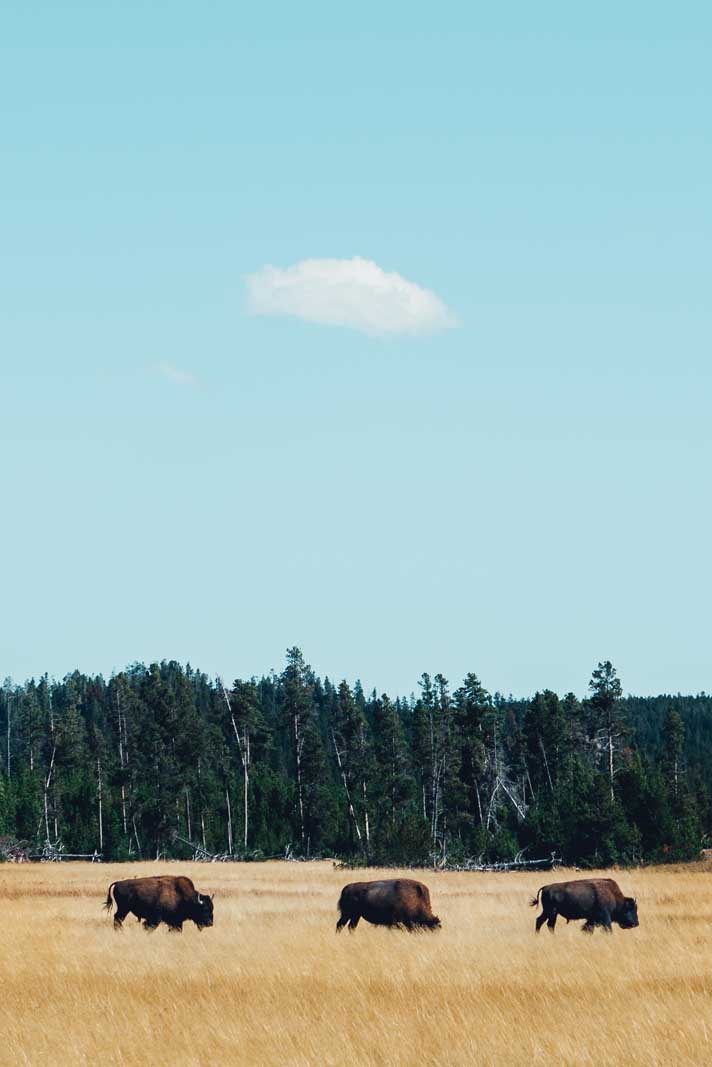
One of the best places to see wildlife in the park is actually in Lamar Valley, but because we are trying to do the most in one day in Yellowstone, Lamar Valley is too far to visit on this trip.
Elk Park is just past the Norris Geyser Basin on the way to the rest of the stops on our Yellowstone Itinerary and a great place to see bison and if you’re lucky other wildlife like elk or bald eagles to name a few. This area is still considered a part of the geyser basins still and some of the most active areas for wildlife and best wildlife viewing spots in the park.
Old Faithful
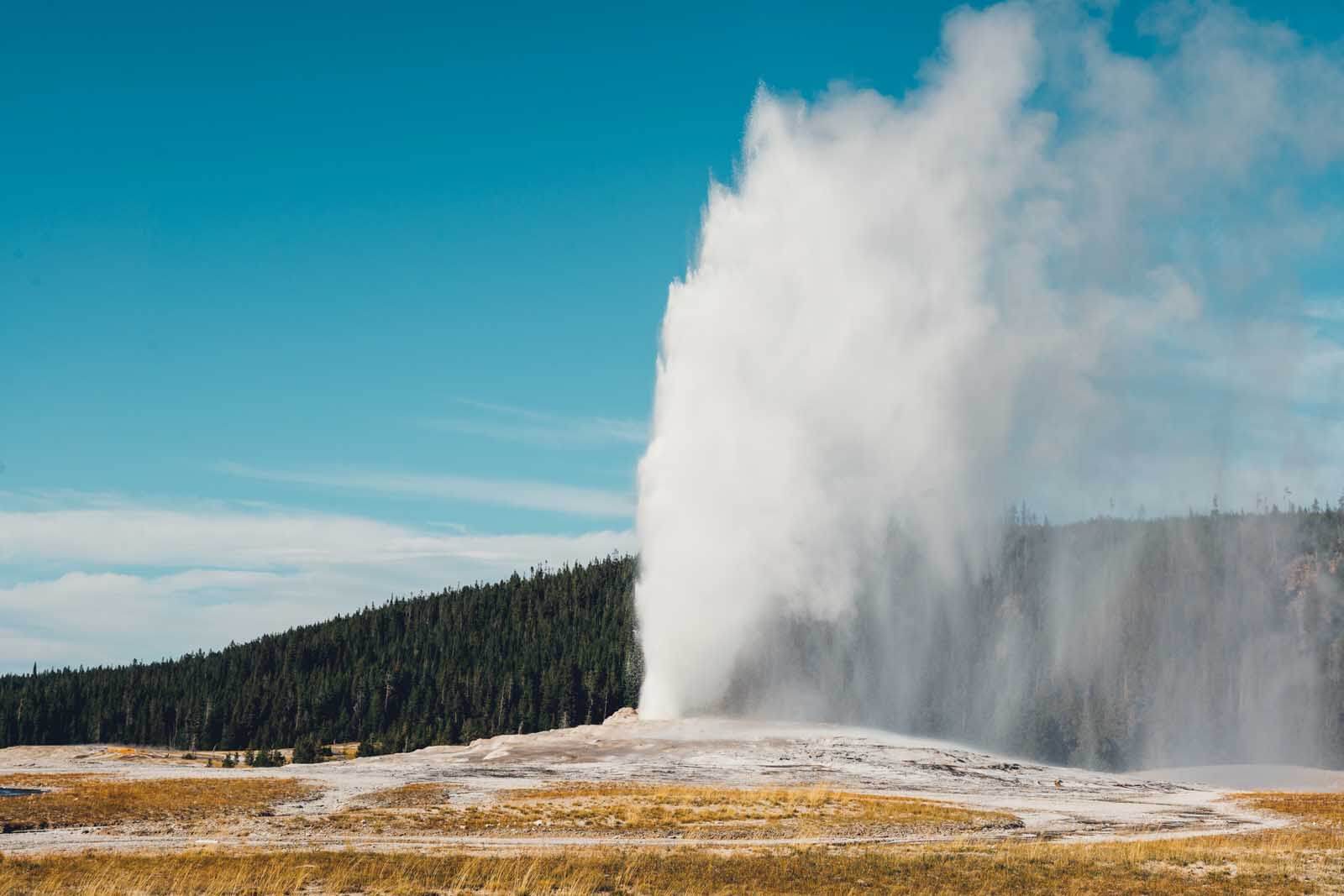
If you would like to watch Old Faithful erupt, you will need to check for the next estimated time at the visitor center and plan your time around it The timing is predicted with at least 90% accuracy and they recommend you to give a 10 minute window before or after the predicted time that it could go off.
During our visit, the prediction was right on the nose of the time they estimated.
We recommend checking the time first then planning around it since the eruptions are anywhere from 35 – 125 minutes in between. If you don’t have a lot of time before the next show be sure to go grab a spot, if you have plenty of time this is a great chance to eat lunch at the restaurants or walk around the boardwalk where there are more geysers to witness nearby.
Another impressive geyser nearby is the Beehive Geyser. We actually saw this one go off from where we were sitting and waiting for Old Faithful. These eruptions last up to 5 minutes and are up to 200 feet tall! So even if you’re far away and it goes off you’ll still be able to catch a glimpse like we did. There’s actually a geyser right next to it called Beehive’s Indicator that shoots water up around 15 feet high from anywhere from a few seconds to 30 minutes before Beehive Geyser will go off.
Be sure to eat here if you didn’t pack your own food, there won’t be many other options along the way. We also recommend getting to Old Faithful with a little time before the next scheduled eruption because seats fill up. Even if you get standing room only you’ll be able to still witness this natural wonder of the park, but if a seat is important to you just plan on getting there a bit earlier and waiting.
Kepler Cascades
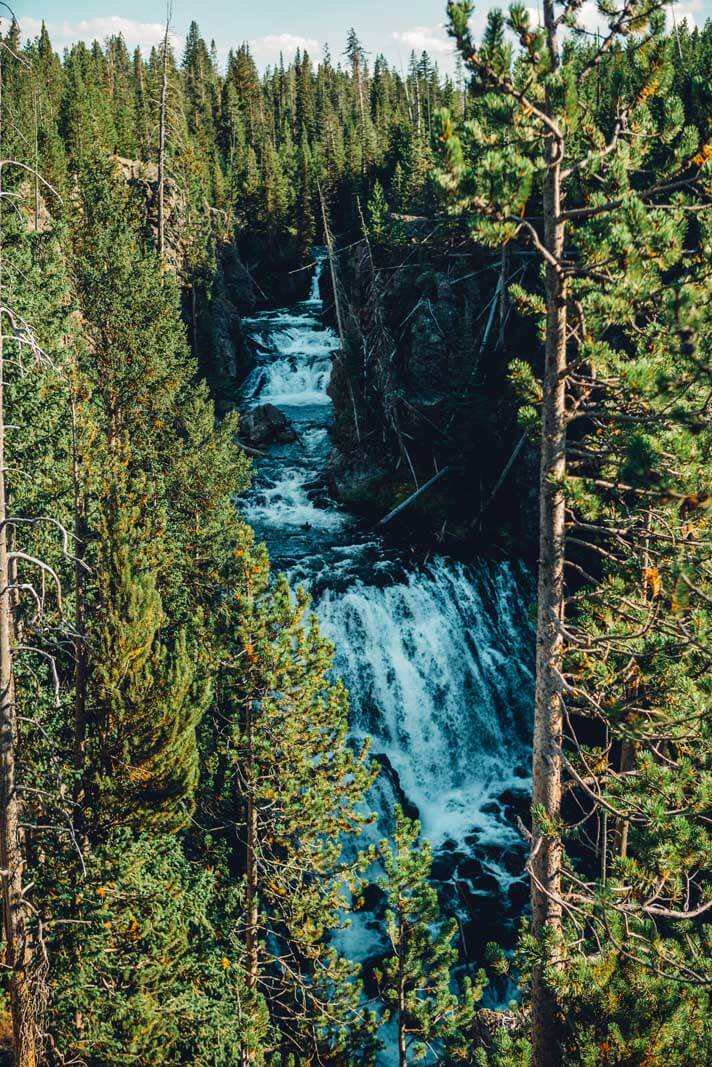
A steep trail runs down from a parking area to the base of the falls, but the most efficient way to fit this stop in your one day in Yellowstone would to just visit the viewing deck right by the parking overlooking the rushing water flowing over the rocks below. The cascade has multiple drops with its largest being 50 feet, with the total drop being around 150 feet.
Grand Prismatic Spring
One of our favorite stops and picks on our one day in Yellowstone itinerary are the psychedelic Grand Prismatic Spring which feels like its from another world. Arguably the most photographed of all the park’s features, the Grand Prismatic Spring is enormous and beautiful, with uncommon colors radiating through it.
The spring and its surrounding thermal pools make up the Midway Geyser Basin along with the Excelsior Geyser, the Turquoise Pool, and the Opal Pool. To observe these thermal wonders you will need to cross the bridge across the Firehole River which you’ll see the hot thermal waters rushing down the hill into the river creating steam.
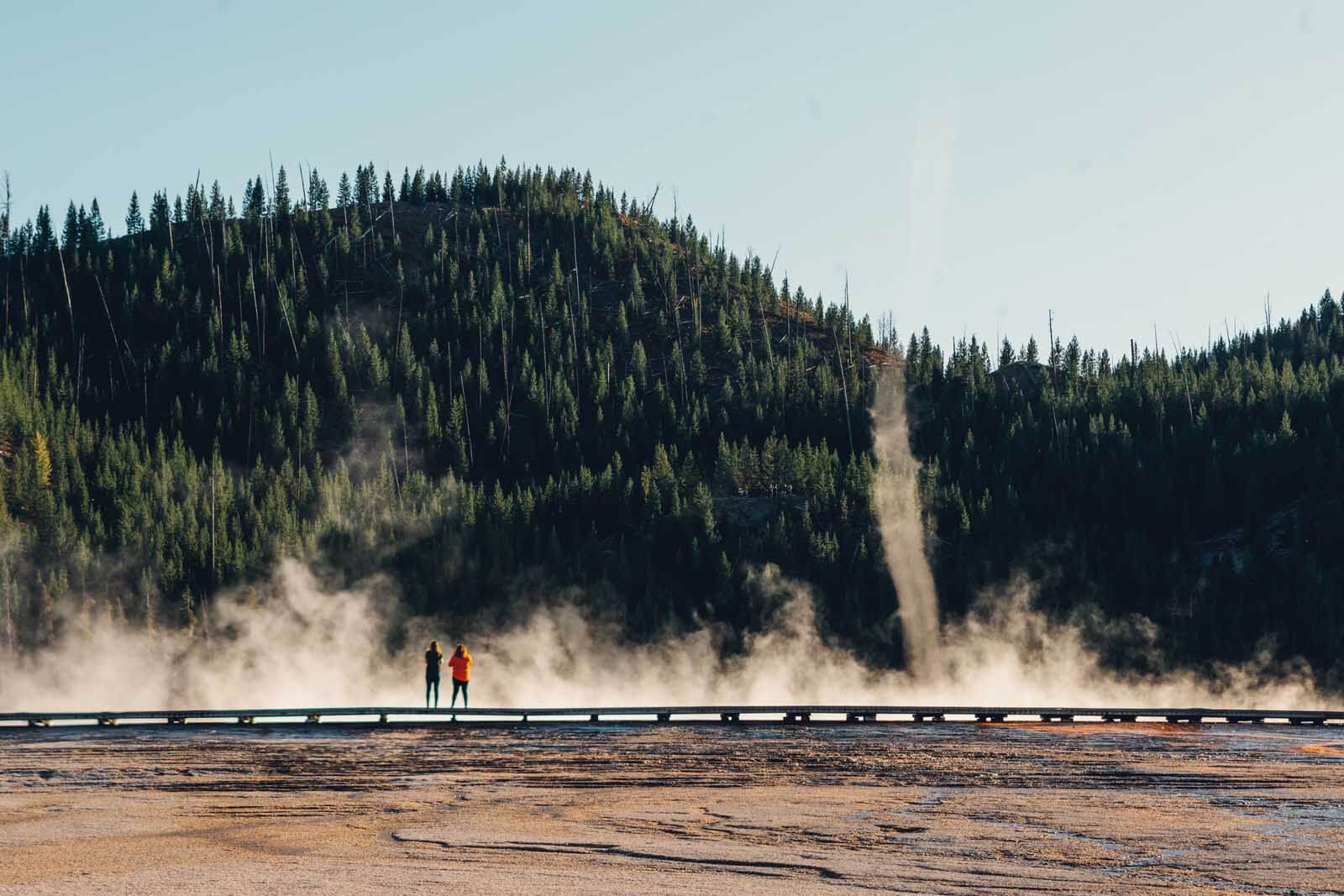
We recommend making the time to do this quick hike to the overlook for the best view.
Note: This spot will most likely be crowded as it’s one of the most famous stops in the park. If you plan around the tour buses that helps. We showed up at 6 pm and the last tour bus had left and we finally had the boardwalk all to ourselves but the lighting wasn’t the best.
For photos, even though you have no control over this, the best time to photograph the Grand Prismatic Spring is when the temperatures are warmer in the day so that there isn’t as thick of steam rising off the thermal pool.
Exit in West Yellowstone
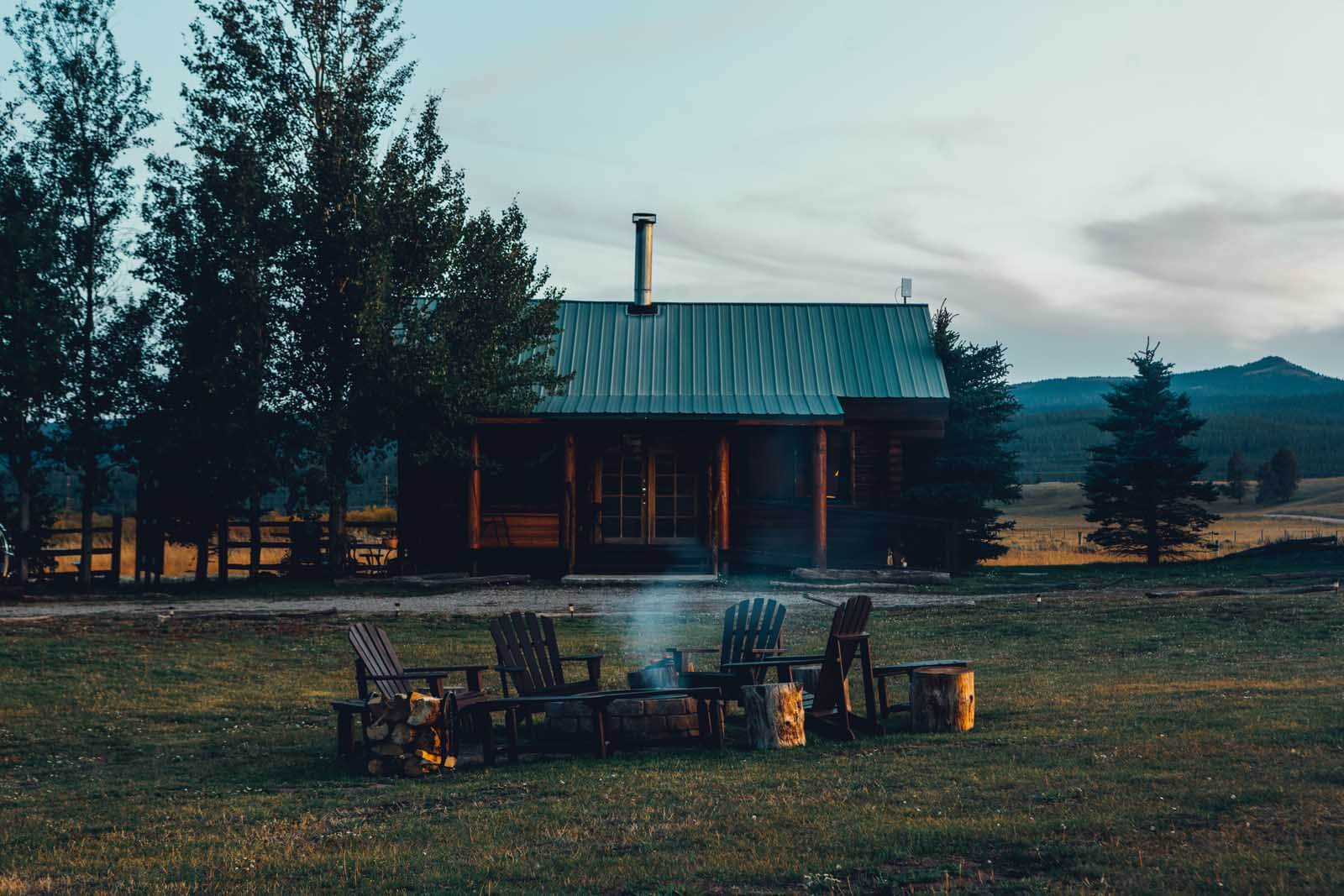
There’s only so much you can see of Yellowstone in a day. Head towards West Yellowstone to leave the park where you can grab dinner and spend the night in any of the amazing nearby accommodations.
If you have time before leaving the next morning be sure to check out the Grizzly and Wolf Discovery Center to learn more about the animals in the local ecosystem.
For an evening stay, we highly recommend Bar N Ranch for their beautiful property and cabins as well as rooms in the main lodge. This is where we stayed with a group and we were blown away by their larger cabin that made us feel like we were at home complete with its own hot tub with a view of the nearby mountains.
There are also smaller cabins, rooms in the main lodge, and yurts as well.
Book Now on Booking.com| Compare Prices for Later on Hotels.com | See Rates on Expedia.com
There are food options at Bar N Ranch but we recommend going into town so you can get a feel for it. We ate dinner at the Slippery Otter which had a great bar full of different beer on tap and a great American fare menu.
Enjoyed this guide on how to spend one day in Yellowstone and Yellowstone itinerary? Bookmark it for later or share the love below on Pinterest.

